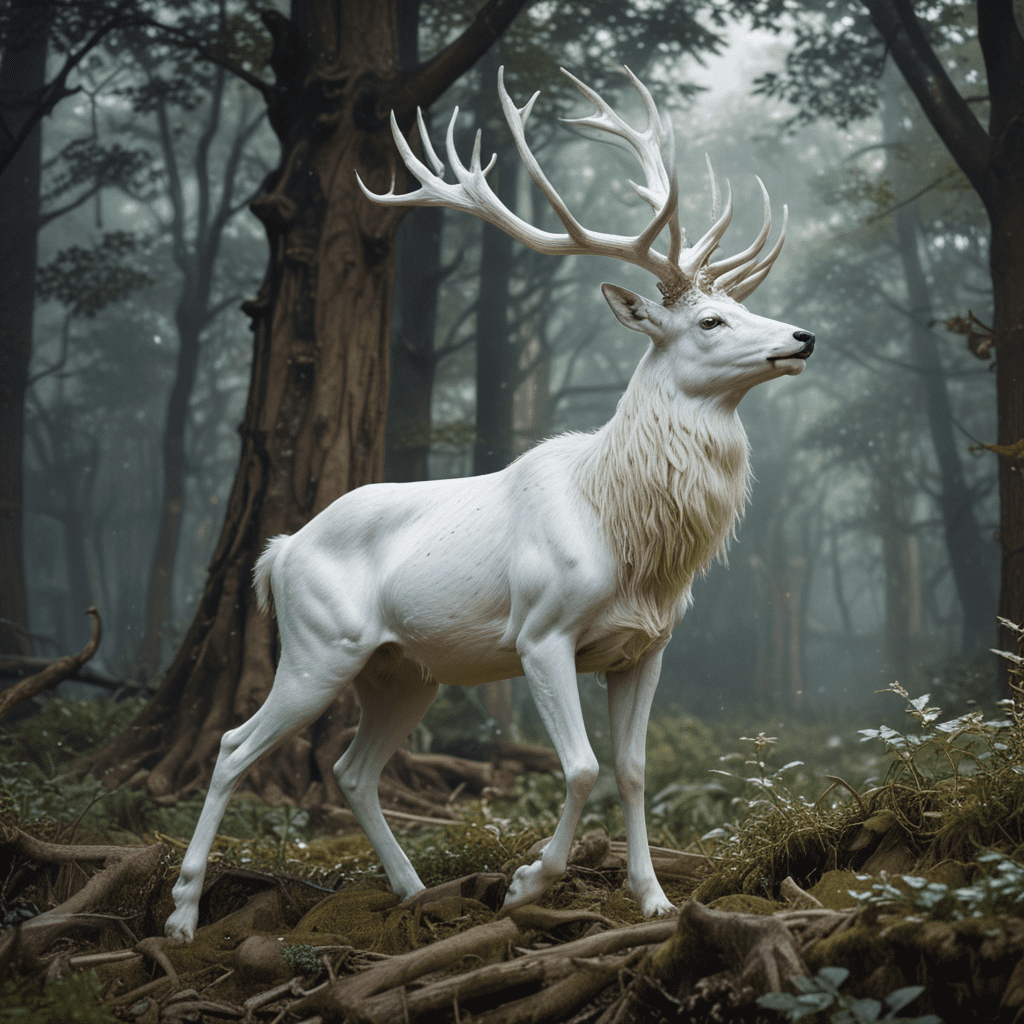The Myth of the White Stag in Chinese Folklore
The white stag, a mythical creature revered in Chinese folklore, holds a profound significance, symbolizing purity, longevity, and good fortune. The myth of the white stag has captivated imaginations for centuries, leaving an enduring legacy in Chinese literature, art, and cultural beliefs.
Origins of the Myth
The origins of the white stag myth can be traced back to ancient Chinese mythology. In the legendary text "Shan Hai Jing" (Classic of Mountains and Seas), the white stag is described as a celestial beast that dwelled in the Kunlun Mountains, the abode of the immortals. It was believed that the stag's appearance signaled the arrival of great blessings and prosperity.
The Symbolism of the White Stag
The white stag is imbued with rich symbolism. Its pristine white coat represents purity, innocence, and renewal. Its antlers, resembling a tree's branches, evoke growth, longevity, and the connection between heaven and earth. The stag's swiftness and grace symbolize strength, agility, and the ability to overcome obstacles.
The White Stag in Chinese Literature
The white stag has featured prominently in Chinese literature, appearing in numerous myths, legends, and poems. In the classic novel "Journey to the West," the white stag serves as a symbol of the protagonist's unwavering determination and his quest for enlightenment. The poet Li Bai penned a famous ode to the white stag, praising its beauty and its association with good fortune.
The White Stag and the Emperor
In Chinese folklore, the white stag was closely associated with the emperor and the concept of divine rule. The appearance of a white stag was seen as a sign that the emperor possessed the Mandate of Heaven, the divine right to rule. The white stag also represented the emperor's virtues, such as benevolence, wisdom, and prosperity.
6. The White Stag as a Harbinger of Good Fortune
In Chinese culture, the white stag is regarded as a harbinger of good fortune and prosperity. Its appearance was believed to bring blessings, wealth, and success. Stories abound of individuals who encountered the white stag and experienced a remarkable turn of fate. The stag's presence was seen as a sign of impending happiness, abundance, and the fulfillment of desires.
7. The White Stag and Taoism
The white stag holds a significant place in Taoist beliefs. In Taoism, the white stag represents the concept of immortality and enlightenment. It is associated with the Eight Immortals, legendary figures who attained spiritual perfection and the ability to transcend death. The white stag is often depicted in Taoist art as a symbol of longevity, wisdom, and the pursuit of the Tao, the ultimate reality.
8. The White Stag in Chinese Art
The white stag has inspired generations of Chinese artists. It is a common motif in traditional Chinese paintings, sculptures, and ceramics. Artists have captured the stag's ethereal beauty and symbolic significance in various forms. Notable examples include the famous painting "White Stag in Autumn Forest" by Li Di, and the exquisite jade carving of a white stag from the Han Dynasty.
9. The Legacy of the White Stag Myth
The myth of the white stag continues to hold a special place in Chinese culture. It has influenced literature, art, music, and folklore for centuries. The white stag remains a cherished symbol of purity, good fortune, and the connection between the natural and spiritual realms. Its legacy serves as a testament to the enduring power of mythology and its significance in shaping cultural identity.
10. Conclusion: The Enduring Power of a Myth
The Myth of the White Stag in Chinese Folklore is a testament to the enduring power of myth and its ability to captivate imaginations. From its origins in ancient legends to its multifaceted symbolism and artistic expressions, the white stag has touched the lives of countless individuals. Its legacy continues to inspire and enchant, reminding us of the timeless allure of mythological traditions and their profound impact on human culture.
FAQ
What is the symbolism of the white stag?
The white stag symbolizes purity, longevity, good fortune, strength, agility, and the connection between heaven and earth.
How is the white stag associated with the emperor?
The appearance of a white stag was seen as a sign that the emperor possessed the Mandate of Heaven, the divine right to rule. It also represented the emperor's virtues, such as benevolence, wisdom, and prosperity.
What is the significance of the white stag in Taoism?
In Taoism, the white stag represents immortality and enlightenment. It is associated with the Eight Immortals and is often depicted in Taoist art as a symbol of longevity, wisdom, and the pursuit of the Tao.
How has the white stag been depicted in Chinese art?
The white stag has been a common motif in traditional Chinese paintings, sculptures, and ceramics. Artists have captured its ethereal beauty and symbolic significance in various forms, from the famous painting "White Stag in Autumn Forest" by Li Di to the exquisite jade carving from the Han Dynasty.
What is the legacy of the White Stag Myth?
The myth of the white stag continues to hold a special place in Chinese culture, influencing literature, art, music, and folklore for centuries. It remains a cherished symbol of purity, good fortune, and the connection between the natural and spiritual realms, serving as a testament to the enduring power of mythology and its significance in shaping cultural identity.



